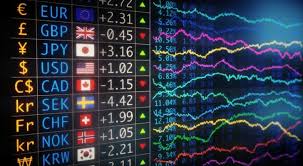How to Open a Forex Trading Account A Step-by-Step Guide 1801157266

How to Open a Forex Trading Account: A Step-by-Step Guide
Opening a Forex trading account can be an exciting yet daunting task for many aspiring traders. Whether you are looking to invest your savings or simply want to explore the world of currency trading, it is crucial to understand the steps involved in setting up your account. In this guide, we will walk you through the entire process, ensuring you have all the information you need to dive into Forex trading confidently. As you navigate this journey, consider researching and comparing different options for brokers. You can check out how to open a forex trading account Top LATAM Forex Platforms to find the best fit for you.
Understanding Forex Trading
Forex trading involves buying and selling currency pairs in the foreign exchange market. Unlike traditional stock trading, Forex operates 24 hours a day, five days a week, offering opportunities for trading at any time. Traders can speculate on the price movements of currencies and potentially make a profit based on their predictions. However, Forex is complex and carries risks, so it is essential to equip yourself with knowledge before opening an account.
Step 1: Research Forex Brokers
The first step in opening a Forex trading account is to find a reputable Forex broker. Brokers serve as intermediaries between you and the Forex market. When researching brokers, consider the following factors:
- Regulation: Ensure that the broker is regulated by a reputable authority, such as the Financial Conduct Authority (FCA) in the UK or the Commodity Futures Trading Commission (CFTC) in the USA.
- Trading Platform: Examine the trading platform offered by the broker. It should be user-friendly and loaded with the necessary tools and features you need.
- Fees and Spreads: Look into the broker’s commission, spreads, and any additional fees that may apply.
- Customer Support: Good customer service is crucial. Ensure that the broker offers reliable support channels.
- Educational Resources: Many brokers offer educational material to help newcomers learn about Forex trading. Look for one that provides these resources.
Step 2: Open a Trading Account
Once you have selected a Forex broker, the next step is to open a trading account. This process typically involves filling out an online application form where you’ll provide personal information, including:
- Full name
- Email address
- Phone number
- Date of birth
- Address
- Employment status
- Financial situation
Some brokers may require you to provide proof of identity and address, which might include scans of your passport or utility bills.
Step 3: Fund Your Account
After your application is approved, the next step is to fund your trading account. Most brokers offer various funding methods, such as:
- Bank transfers
- Credit/debit cards
- E-wallets like PayPal, Skrill, or Neteller
Be aware of the minimum deposit required to activate your trading account and any fees that may apply to your chosen funding method.
Step 4: Choose Your Trading Account Type
Brokers usually offer multiple types of trading accounts, including standard accounts, mini accounts, and ECN accounts. Here’s a breakdown of the most common types:

- Standard Account: Ideal for experienced traders, allowing larger trade sizes.
- Mini Account: Suitable for beginners, featuring smaller trade sizes and lower initial deposit requirements.
- ECN Account: For advanced traders who prefer direct access to the interbank market and lower spreads.
Choose an account type that aligns with your trading experience and investment goals.
Step 5: Download Trading Software
Once your account is funded, it’s time to download the trading software. Most brokers provide access to popular trading platforms like MetaTrader 4 or MetaTrader 5, which are widely used due to their advanced charting features and customization options. Install the software on your computer or mobile device, and familiarize yourself with its features and tools, such as:
- Chart analysis tools
- Order placement options
- Economic calendar
- Risk management tools
Step 6: Develop a Trading Strategy
Before you start trading, it’s crucial to develop a trading strategy. A trading strategy outlines your approach to entering and exiting trades and managing risks. You can choose from various trading styles, such as:
- Day Trading: Making multiple trades within a single day.
- Scalping: Executing numerous quick trades to capture small price movements.
- Swing Trading: Holding positions for several days or weeks to capitalize on price shifts.
Your strategy should also include risk management techniques, like setting stop-loss orders to minimize potential losses.
Step 7: Practice with a Demo Account
Many brokers offer demo accounts that allow you to practice Forex trading without risking real money. This is an excellent opportunity to test your trading strategy, explore the trading platform, and build confidence before transitioning to a live account. Use the demo account to get comfortable with placing trades, managing your portfolio, and developing your skills.
Step 8: Start Trading
Once you feel ready, it’s time to move to live trading. Keep your initial trades small to minimize risk as you gain experience. Continuously analyze your performance, revisit your trading strategy, and make necessary adjustments based on your trading results.
Step 9: Stay Informed and Continue Learning
The Forex market is dynamic and constantly evolving. To succeed as a trader, it’s important to stay informed about market news, economic trends, and geopolitical events that can impact currency prices. Engage with educational resources, join trading forums, and possibly consider obtaining professional mentorship to enhance your trading skills.
Conclusion
Opening a Forex trading account is a significant step towards becoming a successful trader. By following these steps and staying disciplined in your approach, you can increase your chances of making profitable trades. Remember that practice makes perfect, and continuous learning is key in this ever-changing environment.

